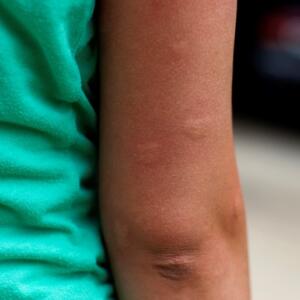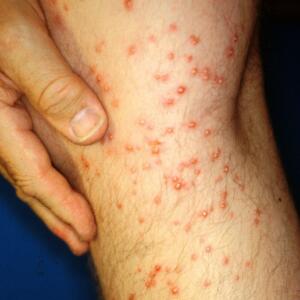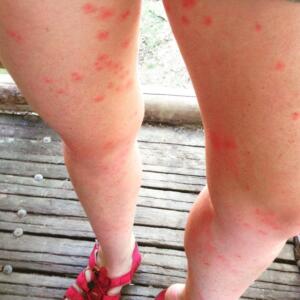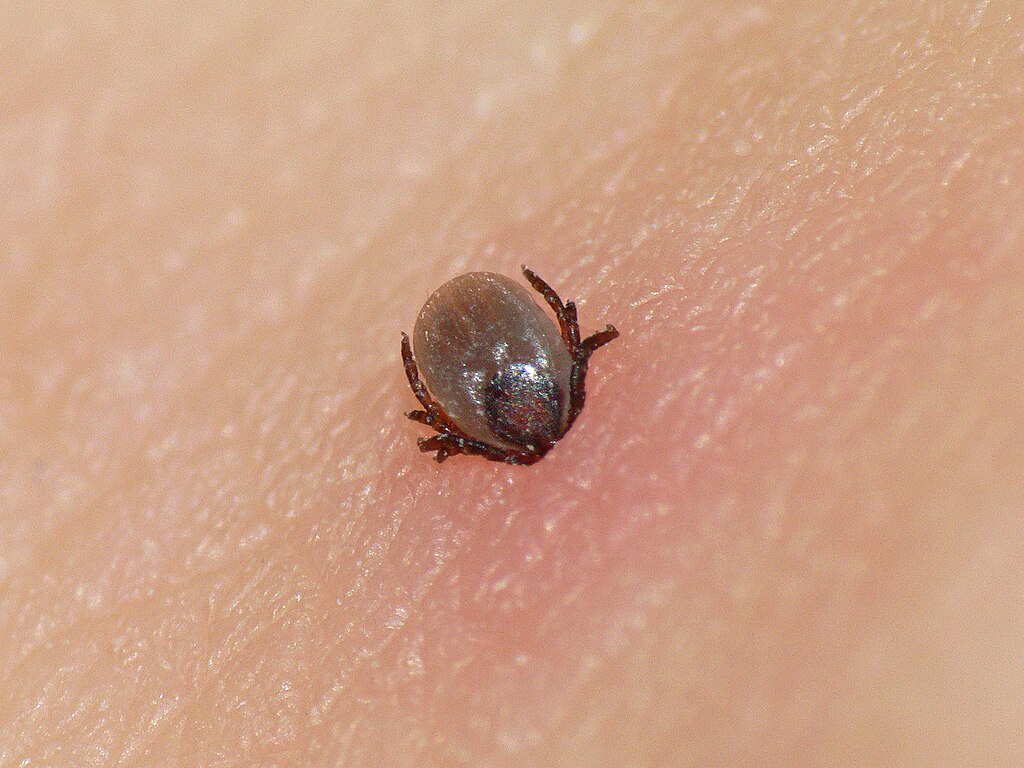When you’re at the lake, the one thing there is more of than boats and BBQs is bugs, and one bite can ruin a good time in an instant. Being able to identify your bug bites and knowing how to treat them is the fastest way to getting back out on the water, where you belong.
So take a look at this handy guide we’ve put together, and get back to where the fish are biting, not the bugs!
Mosquitoes

Mosquito bites can be identified by raised lumps, rounded edges and, often, a small red dot located in the center of the bite. These bites can sometimes harden or swell to large welps, similar to a blister.
Almost immediately, these bug bites begin to itch. This is due to the saliva mosquitoes inject into the bite.
The saliva, which enters the body as the mosquito extracts blood from the bite, contains proteins that many people have allergic reactions to, resulting in the tell-tale swelling and irritation.
To treat mosquito bites, wash them with warm soap and water to reduce initial irritation, and apply a topical hydrocortisone cream, to reduce itching, swelling and redness.
Applying a cool compress like a damp washcloth or ice pack can also offer some relief.
Excessive scratching could cause a mosquito bite to open, which can make you susceptible to infection such as staph and impetigo (similar to hand, foot and mouth disease.) To avoid infection, cover all open wounds with a bandaid.
Ants

One of the most common culprits in ant bites is the fire ant; however, these insects actually sting their victims rather than bite them, as mosquitoes do.
After being stung, a fire ant sting will swell and turn red. Like a mosquito bite, fire ant stings may also itch, but they will not harden.
Often, small pus or clear liquid-filled blisters will appear as a result of the venom injected upon being stung. These blisters can last anywhere from three to eight days, and will burst and leave an open sore if scratched.
Similar to bees and wasps, some people can have serious allergic reactions to fire ant stings, especially if stung multiple times. It’s important to be aware of any difficulty breathing, swelling in the throat or lips, or increased heart rate you might experience.
Medical professionals suggest treating fire ant stings by applying a cold compress, taking antihistamines and applying an anti-itch ointment.
Chiggers

A chigger bite looks like a combination of an ant sting and mosquito bite. These bites will also turn bright red and inflame, often appearing in patches.
Chiggers are attracted to places on the body that are often covered by tight-fitting clothing, like your ankles and in the folds of creased skin like your armpits and the backs of your knees.
A member of the mite family, a chigger injects its saliva into human skin which facilitates its being able to eat the skin around the bite site.
These bugs are barely visible to the human eye at 1/150 of an inch in size, and can often stay attached to their victims for several days before falling off.
Chigger bites will begin to itch once the insect itself is no longer attached.
Treat with a topical anti-itch ointment and avoid scratching.
Ticks

Tick bites appear as singular, dime-sized red marks with a small black spot in the middle of it. Like chiggers, when these bug bite, they often stay attached until they are knocked off or removed.
Ticks burrow into their victims’ skin to feed on their blood, often leaving only their back legs and bottom halves exposed.
Most often these bugs bite in areas that are warm and damp, such as armpits, the groin area, and folds in your skin. Ticks are also commonly found on body parts covered in hair, like your scalp.
Ticks are dangerous because of the diseases they carry.
Lyme disease can be identified by a red, circular rash surrounding the initial bug bite. This will resemble a bulls eye and may be accompanied by swollen lymph nodes, fever, chills and muscle aches. Untreated, lyme disease can cause permanent damage to the nervous system, heart, muscles and joints.
Rocky Mountain Fever, a potentially life threatening disease, is characterized by fever, fatigue and headaches and a rash that starts around the ankles and spreads across the rest of the body.
The best way to prevent these diseases is to properly remove attached ticks and thoroughly clean these bug bites.
To remove a tick, grasp the insect as close to your skin as possible using fine-tipped tweezers. Pull upward on the bug with even force, but avoid twisting the tick in order to prevent dislodging the pincers in the skin.
Once removed, clean the bug bite with soap and water, rubbing alcohol or iodine and dispose of the tick by flushing it, suffocating it in a plastic baggie or submersing it in alcohol.
Looking for more things to do at the lake? Read here.

